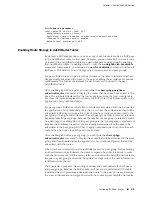
Table 13: Source Addresses and Default Next Hop Addresses for Various Configurations
Default Next Hop
Value for IPv6 Prefixes
Default Next Hop
Value for IPv4 Prefixes
Source Address used
for TCPv4 and TCPv6
Connection
Configured Update
Source Address
Configured Neighbor
Address
IPv4 source address
mapped to an IPv6
address
IPv4 source address
IPv4 source address
IPv4 source address
IPv4 neighbor address
Not allowed
Not allowed
Not allowed
IPv6 source address
IPv4 neighbor address
IPv6 address of the
interface. If the
interface does not have
an IPv6 address, then
the IPv4 address of the
interface is mapped to
an IPv6 address.
IPv4 address of the
interface
IPv4 address of the
interface. If the
interface does not have
an IPv4 address, then
the session does not
come up.
Interface name
IPv4 neighbor address
IPv6 source address
0.0.0.0
IPv6 source address
IPv6 source address
IPv6 neighbor address
Not allowed
Not allowed
Not allowed
IPv4 source address
IPv6 neighbor address
IPv6 address of the
interface
IPv4 address of the
interface. If the
interface does not have
an IPv4 address, then
0.0.0.0.
IPv6 address of the
interface. If the
interface does not have
an IPv6 address, then
the session does not
come up.
Interface name
IPv6 neighbor address
You can override a native IPv6 next-hop address with either the
neighbor
update-source
command or an outbound route map.
When you specify an interface with the
neighbor update-source
command, the
IPv4-mapped IPv6 address of the interface is used instead of the native IPv6 address
for the next hop.
host1(config)#
interface loopback 0
host1(config-if)#
ip address 10.1.1.1/32
host1(config-if)#
exit
host1(config)#
router bgp 100
host1(config-router)#
neighbor 2::2 update-source loopback 0
In this example, the IPv4-mapped IPv6 address of the loopback 0 interface is the
next-hop address sent when IPv6 prefixes are advertised. However, if loopback 0
has an IPv6 address, then that address is used as the default next hop for advertising
IPv6 prefixes.
Specifying Peers That Are Not Directly Connected
Normally, EBGP speakers are directly connected. When you cannot connect EBGP
speakers directly, you can use the
neighbor ebgp-multihop
command to specify
that the neighbor is more than one hop away. You generally need static routes to
Configuring BGP Peer Groups
■
31
Chapter 1: Configuring BGP Routing
Summary of Contents for BGP
Page 6: ...vi ...
Page 8: ...viii JUNOSe 11 1 x BGP and MPLS Configuration Guide ...
Page 37: ...Part 1 Border Gateway Protocol Configuring BGP Routing on page 3 Border Gateway Protocol 1 ...
Page 38: ...2 Border Gateway Protocol JUNOSe 11 1 x BGP and MPLS Configuration Guide ...
Page 234: ...198 Monitoring BGP JUNOSe 11 1 x BGP and MPLS Configuration Guide ...
Page 236: ...200 Multiprotocol Layer Switching JUNOSe 11 1 x BGP and MPLS Configuration Guide ...
Page 542: ...506 Monitoring BGP MPLS VPNs JUNOSe 11 1 x BGP and MPLS Configuration Guide ...
Page 544: ...508 Layer 2 Services Over MPLS JUNOSe 11 1 x BGP and MPLS Configuration Guide ...
Page 610: ...574 Virtual Private LAN Service JUNOSe 11 1 x BGP and MPLS Configuration Guide ...
Page 624: ...588 VPLS References JUNOSe 11 1 x BGP and MPLS Configuration Guide ...
Page 680: ...644 Virtual Private Wire Service JUNOSe 11 1 x BGP and MPLS Configuration Guide ...
Page 724: ...688 Monitoring MPLS Forwarding Table for VPWS JUNOSe 11 1 x BGP and MPLS Configuration Guide ...
Page 725: ...Part 6 Index Index on page 691 Index 689 ...
Page 726: ...690 Index JUNOSe 11 1 x BGP and MPLS Configuration Guide ...
















































